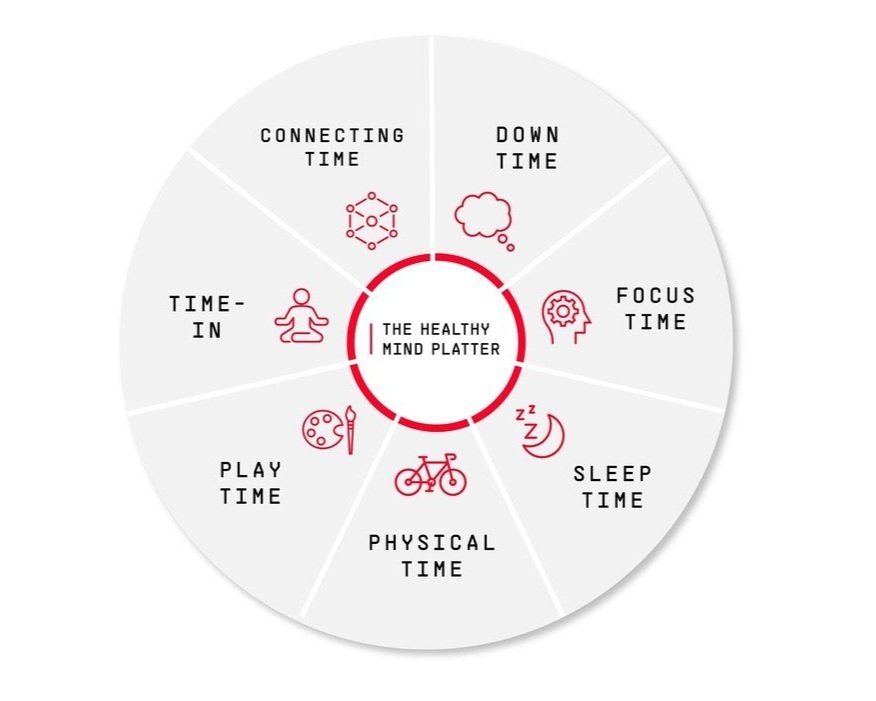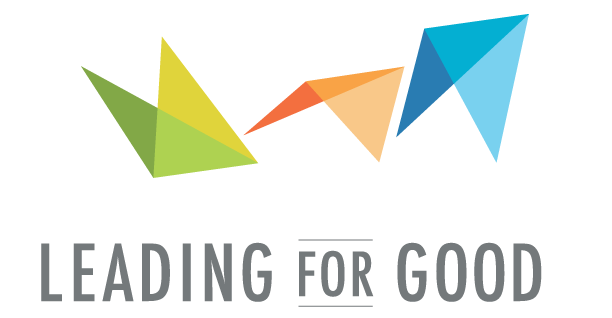Recharging Ourselves At End of 2021; Taking Stock with the Healthy Mind Platter Model
As we move to the close of 2021, and hopefully take a little time off from work, I wanted to offer some ideas on recharging ourselves after yet another long and challenging year. I cannot help but feeling that we all lived several years in one these last 12 months. Burnout felt particularly acute for leaders across organizations of all sizes and industries. Zoom fatigue, continued lack of clarity on COVID and return to work, growth in organizations coupled the Great Resignation are just some of the things that contributed to the mental and emotional exhaustion in ourselves and the broader workforce.
While I have long understood why it’s important to “sharpen one’s saw” and care for oneself holistically, I came to observe firsthand the cost of my coaching clients sacrificing their health and well- being while meeting professional demands this year. Indeed, trying to work on all cylinders week after week had diminishing returns for focus, creativity, optimism, and resilience, all of which are critical resources for leaders. Today, we have the benefit of computers and artificial intelligence at our fingertips, but as humans we just cannot care and push our bodies the way we run our machines.
One model that I often like to share with clients around mental acuity and self care is the Healthy Mind Platter, from Neuroscientist Dan Siegel and Coaching guru David Rock. Just like the food pyramid, which gives approachable recommendations for our daily consumption, the Healthy Mind platter puts forth key activities that contribute to our overall mental, physical and emotional health. This holiday season, I hope you will make time for some of the recharging activities that you too often cut short or don’t create space to do. Here are my thoughts on how you might incorporate them easily and also feel a little more optimism and lightness as well. The list is organized from those I see busy professionals and leaders least likely to incorporate to those we are very familiar with carrying out in our results-driven cultures.
Healthy Mind Platter of Activities for Mental and Emotional Health

Play: This is about allowing yourself to be creative, spontaneous and/or light. Take time for whatever pursuits are truly fun for you and choose to bring this attitude of lightness to whatever you are doing, even if a house chore. It could be a game of Charades, a white elephant gift exchange with family members, an art or baking project or even a simple playful exchange with kids or animals in your life. When my 11-year old son failed to brush his teeth this week, I challenged him to a tooth brushing dance battle, which involved dance moves and a little brushing at the same time. Both of us ended up laughing so much, we spilled out our toothpaste and decided it was a draw. I know I will get dragged into a family game of Catan this break and while it’s not my personal favorite, I appreciate the break of competing with my family in an alternate agrarian universe.
Sleep: On average, adults get less than seven hours of sleep each night. This is two hours less than adults got on average a century ago, according to a 2018 National Geographic article. While many of us are tempted by screens and professional demands to cut ourselves short in this department, the toll on both our short and long term mental acuity is not to be minimized. Experiment with getting into bed with a good book, a cup of tea, a lowered room temperature and light at or before 10 pm; this is the time to reset on a consistent pre-bedtime ritual that will take you off screens at least 1-2 hours before bedtime.
Connecting Time: We all can agree that connecting over Zoom just isn’t the same as connecting with colleagues and friends in person. To the extent that you can do so safely this holiday season, connect with loved ones and dear friends over a walk in nature, a meal or even a phone call, if that’s what possible right now. Our brains crave and benefit from connection time with people who make us think, stretch and appreciate us, laugh with us, and help us to feel connected to something much bigger than ourselves.
Down Time: In our busy, achievement-oriented lives, it’s rare to allow ourselves to do nothing. This statement probably gives you hives just reading it! We have become accustomed to always listening, writing, moving and doing, not realizing our constant aim for productivity works against us when we don’t take breaks. Our brains recharge when we allow ourselves to be present through our five senses. This could be as simple as watching the rain fall against the trees or being present to the sounds and people on a train without the glare and distraction of a device. This activity of taking down time could be just 5 minutes, but requires intention to carry out and perhaps a reframe on the value of doing nothing.
Physical: Moving our bodies aerobically is something we all know to be important for our health, mentally and physically, but too often it is the first thing to drop in a demanding, professional and/or personal schedule. These past two years since the Pandemic, I have found a rhythm with one particular online pilates class, a recorded set of remote biking classes, and regular 30-40 minute runs in my neighboring parks. Find activities you love, which can be done in a variety of weather and health conditions; I have seen too many clients get derailed this year when external factors limit their ability to do their one chosen physical routine. We all need a portfolio of physical activities.
Time In: This restorative activity is different from “time in” for the reason that it is is active reflection, where you are tuning into thoughts, feelings and sensations; this might be a meditation practice or it could be active contemplation about a particular situation, problem, plan or phenomenon. One of my goals over the last couple of years in this vein has been to become more mindful and incorporate a practice of meditation on a weekly basis. You might actively reflect on your commute, on a walk or while cooking dinner.
Focus: The focus muscle is likely the most honed in our busy, professional lives. Focus is when we actively dedicate our minds to executing tasks, whether responding to the inbox or completing a deliverable. While it can be tempting to want to catch up on deep professional projects during holiday season, I challenge you to dedicate yourself to a personal project you have been putting off for some time. For me, I want to put together photo selections for an album from a family event earlier this year, and it’s a project I have been putting off for the sheer volume of sorting and selecting a limited number of images, but I know I will enjoy and get satisfaction from once I get into flow with it. For you, this could be cataloguing wins and lessons learned from 2021, a home improvement project, a New Year’s card or a volunteer project in your community.
The model intentionally leaves out specific timing guidelines for each activity, and suggests that we find at least a little time each day for all of these activities to be at our most optimal mental functioning. This is liberating in that we each can find our way with incorporating these practices without a performative mindset. It’s also true that many of these activities have overlap and are not mutually exclusive. When we exercise with friends and can laugh over a funny story, it feels as if we are carrying out 3 in 1. This year, I came to experientially understand how doing less at work offers the opportunity to do more across all spheres of life, including the ability to do more creative thinking work over a sustained period of time.
I hope you will find the 1-2 activities you are the least likely to incorporate in this final epic chapter of 2021.
